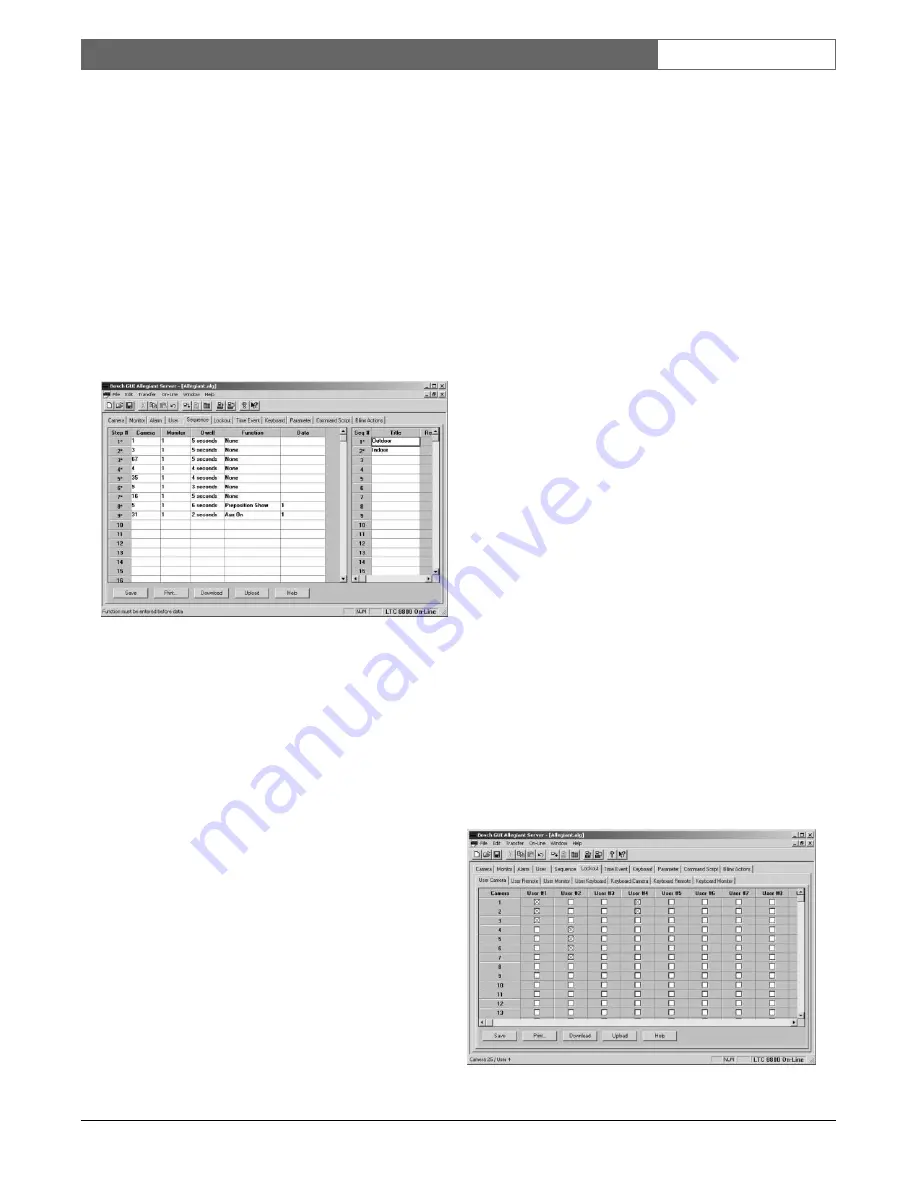
EN
| 45
Bosch Security Systems | 02 April 2004
LTC 8850 |
Instruction Manual
|
Allegiant Server
Dwell
This cell contains the dwell time. The
Dwell Time
is
the number of seconds that the specified camera is
displayed on the specified monitor in a running
sequence. This dwell time can have a value from 1 to
60 seconds. There are three other special values that
the dwell time may have:
Salvo
,
Unload
, or
Hold
. If -
1 is entered for the dwell time, the step will salvo.
Salvo means that the sequence will immediately
process the next step and continue processing steps
until an actual dwell time is encountered. A salvo
allows multiple steps to be performed simultaneously
in a sequence. If -2 is entered for the dwell time, the
sequence will automatically stop at this step.
Figure 83 Sequence Configuration Table
A user could restart the sequence with the <RUN>
key on an Allegiant keyboard. A dwell of -3 will stop
the sequence at that step and automatically unload it
from its monitor. These special entries can be entered
by right-clicking in the cell. This will display a dialog
box with these selections.
Function/Data
These fields allow the user to program remote
commands into the sequence. For example, a sequence
may switch between pre-positions on the same camera
or turn on and off the autopan. The functions may also
be used to implement a
poor man’s pre-position
by
allowing the camera to be panned to approximate
locations based on the time intervals.
The selections that are available in the
Data
column
depend upon the selected function. For pan, tilt, and
lens functions, the data values represent the duration of
the action. The time values range from 0.5 to 32
seconds, in 1/2 second intervals. For Auxiliary Off,
Auxiliary On, and Auxiliary Toggle functions, the data
values select the auxiliary number. For the pre-position
functions, the data values select the pre-position
number.
Title
Each sequence may be named. This name may consist
of up to eight characters entered from the keyboard.
This name is used in various Allegiant system printer
messages.
The sequence names are displayed in a table to the
right side of the sequence spreadsheet. To enter a
sequence name, select the appropriate sequence
number and enter the desired name.
Relative
Checkboxes in this column indicate whether or not a
sequence is relative.
In Relative mode, a sequence may be loaded and run
from any monitor. The monitors specified in the
sequence are adjusted so that the lowest monitor
number is set equal to the monitor on which the
sequence is loaded. If the sequence contains multiple
monitors, the remaining monitor numbers are adjusted
accordingly.
When not in Relative mode (absolute mode) the
sequence can only run on monitors specified in the
sequence. For example, if a non-Relative (absolute)
sequence is programmed for monitor 2, the sequence
can be loaded and run from monitor 2 only.
3.2.6.6 Lockout Tables
The lockout tables are used to restrict access to system
resources.
Figure 84 Lockout Configuration Tables






























